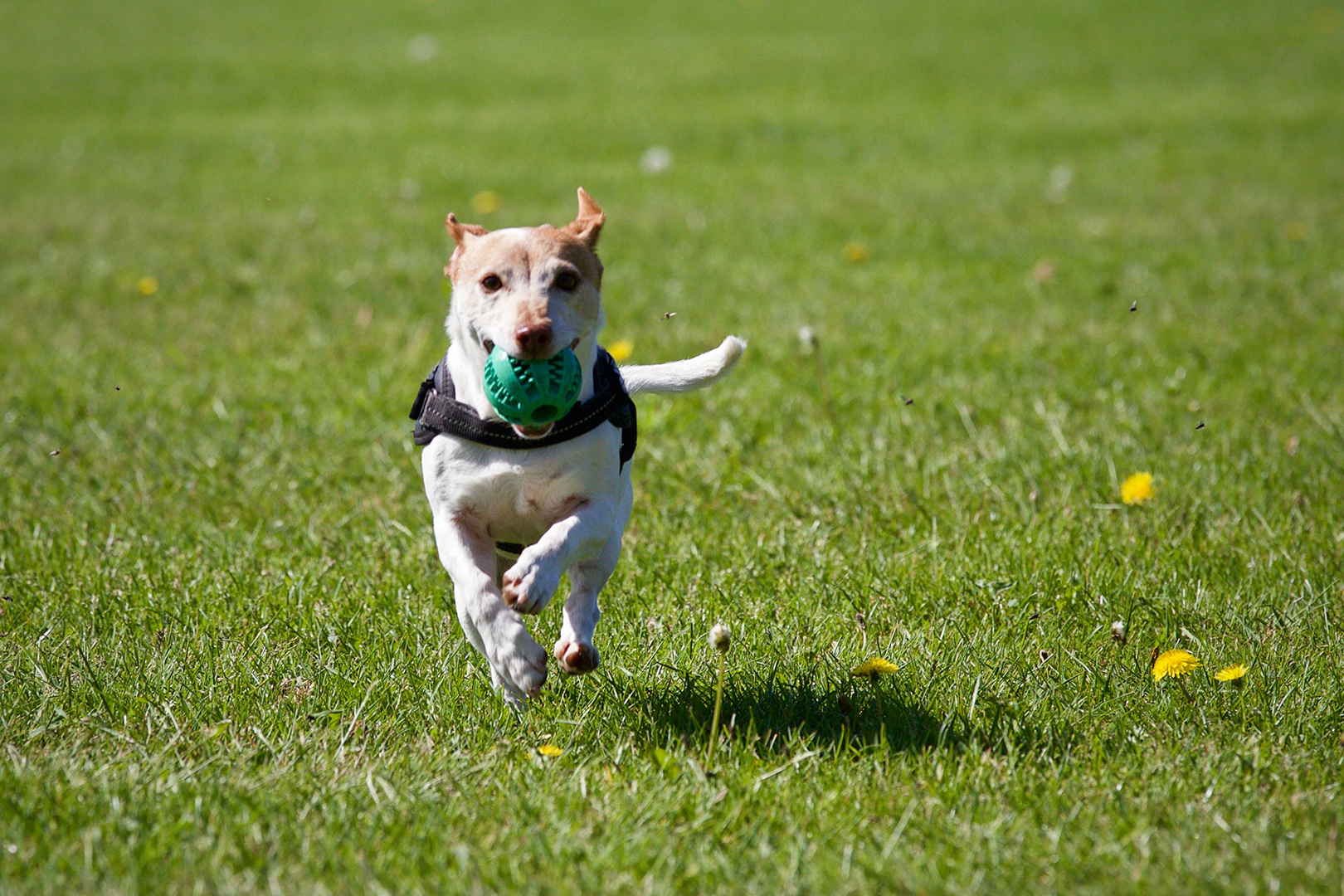Hobby Hazards: Maintaining a Pet-Safe Environment
After spending part of March and all of April at home, many people are finding that their television queues are watched, their video games are won, and their chores are done (or avoided!). As they search for more creative ways to pass the time, hobbies like painting, embroidery, and jogging are making a resurgence.

Though finding fun and productive ways to pass time is important for wellbeing, Dr. Christine Rutter, a clinical assistant professor and emergency and critical care specialist at the Texas A&M College of Veterinary Medicine & Biomedical Sciences, says that pet owners should be cognizant of any hazards these new hobbies might introduce into their pet’s environment.
“I’m seeing a very different variety of injuries at the Veterinary Medical Teaching Hospital,” Rutter said. “I’m seeing a lot of pets eating a sewing needle because their mom is home and sewing, something that she wouldn’t normally do, or ‘I took the puppy fishing and now there’s a fishhook in his paw.’”
If pet owners are learning a hobby like sewing, knitting, crocheting, fishing, or another activity that relies on sharp tools and supplies, it is important that they keep potentially dangerous equipment stored out-of-reach from their pet. Other craft supplies, like some paints, modeling clays, and glues, can also be dangerous if ingested.
“Decrease opportunities for environmental injury,” Rutter said, “If you’re trying out new hobbies or activities, make sure that you’re keeping the things (tools, etc.) associated with those hobbies safely away from your pets.”
Pet owners exploring more physical hobbies, such as jogging, should also be mindful of how a change in routine affects their animal.
“Whenever you’re starting a new exercise routine with your pet, you want to do the same thing that we would recommend for any human starting a new exercise program,” Rutter said. “Talk to your veterinarian; if your dog has co-morbidities—things like underlying chronic illnesses, such as heart disease, respiratory disease, chronic coughing, if they’ve had any changes in their bark or difficulty breathing, or if your pet has an orthopedic disease, a history of limping, history of joint issues or replacement—you really want to make sure that you start off slow.”
As the weather warms up, it is also important that owners consider how the heat may affect their pet, especially during exercise.
“In Texas, heat and humidity are a big deal,” she said. “You probably should not go out and exercise your dog a lot when it’s very humid; with humidity over about 60 percent or temperatures over about 80 or 85, we start worrying about heatstroke. Also, keep exercise sessions short when you can’t stay underneath those environmental restrictions.”
Heatstroke is a very serious condition that requires emergency veterinary care.
“If you suspect your pet has heat stress at any time, that is not a time to wait and see what happens. If your pet seems exhausted on a walk, has trouble breathing, is panting and can’t stop, vomits, or seems dazed or can’t stand up, those would be emergencies,” Rutter said. “You should not feel at all bad about going to your veterinarian’s office immediately.
“It can also be helpful to cool your pet down by wetting them,” she said. “However, you should not put them in ice water—just lukewarm water, wet their fur, and head to the closest veterinary hospital because heatstroke is a huge emergency, and dogs die of it every day.”
Though it is important that pet owners are mindful of how changes in activity might affect their furry running partner, Rutter says that most dogs would benefit from being included in this new hobby.
“I wouldn’t want to dissuade people from exercising their pets or having a good walk, because they need ways to get out their frustration and their anxiety,” she said. “They need a way to get that out, and a walk is a really great way to provide them not just the physical exercise, but also that social structure.”
A new hobby can be a healthy outlet and productive way to pass the time at home. There are plenty of activities owners might wish to pursue while sheltering in place, and many can be done with a cat in your lap or a dog by your side, provided owners make the correct adjustments to keep their furry friend safe.
Pet Talk is a service of the College of Veterinary Medicine & Biomedical Sciences, Texas A&M University. Stories can be viewed on the web at vetmed.tamu.edu/news/pet-talk. Suggestions for future topics may be directed to editor@cvm.tamu.edu.


